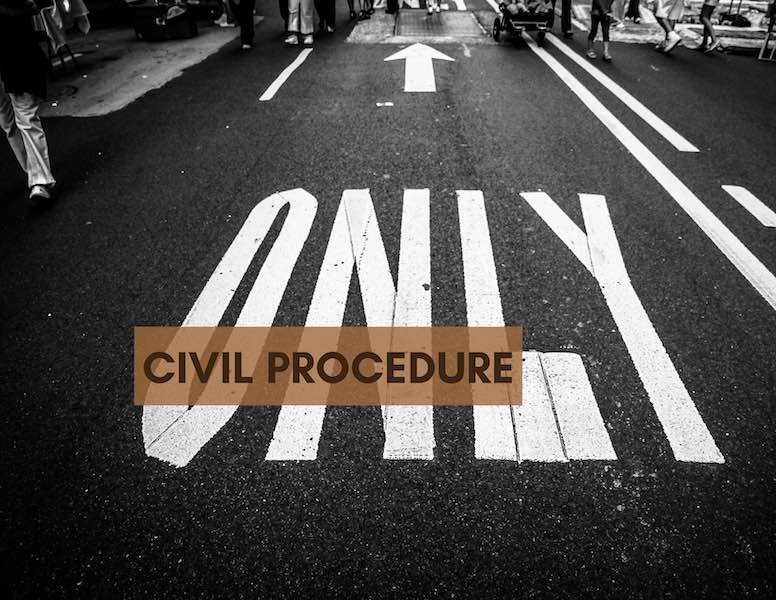The Only Time A ‘Conversion Therapy’ (For Your Court Action) Works
by Nicholas Navaron Chula ~ 10 December 2020

Contributed by

Nicholas Navaron (Associate)
Tel: 603-6201 5678 / Fax: 603-6203 5678
Email: nnc@thomasphilip.com.my
Website: www.thomasphilip.com.my
Your grandfather passed, and being your grandfather’s favourite grandchild, you were bequeathed with a parcel of land.
Excited, you cruised your way to the land to venture into your new realty voyage.
Upon arrival, you discovered that a group of people have been staying over at the land, building a small community there (most probably unbeknownst by your grandfather because grandfather has a million other parcels of lands he has to take care of).
You asked them to leave, but they did not want to.
So, you asked your friend (who happened to be a lawyer) on what to do, and he ‘advised’ you to file an originating summons pursuant to Order 89 of the Rules of Court, 2012 (“ROC”) against the squatters.
You did it.
However, as affidavits were exchanged between you and your opponents, you realised that there are various allegations arising in the affidavits between you and your opponent, which may not be able to be determined by affidavit evidence alone.
In essence:-
- that grandfather knew that your opponents had been staying there since early 20th century;
- that grandfather had purportedly been collecting money from your opponents; and
- that your grandmother (who is still alive and well and is aware of the above) told your opponents verbally to leave the impugned land in or around 1998 until 2005, but they refused to leave.
Can you apply to ‘convert’ your originating summons into a ‘writ’ so that you can cross-examine your pesky opponents?
Originating processes
Generally, there are two (2) ways of commencing civil legal proceedings in court – one by writ and another by originating summons.
What is the difference?
A civil legal proceeding begun by a writ involves a substantial dispute of fact. An example is when the dispute concerns mainly on the issue of fraud or misrepresentation.
A civil legal proceeding begun by an originating summon commonly involves an application pursuant to a written law or an interpretation of a written law or instrument. An example is an application for inspection of accounts and records of a company pursuant to Section 245(4) of the Companies Act, 2016.
Application to ‘convert’ an originating summons into a writ
An application to ‘convert’ an originating summons into a writ can be made pursuant to Order 28, rule 8 of the ROC.
Pursuant to an order under Order 28, rule 8 of the ROC, your case (which begun by originating summons) will be treated as if it begun by a writ. In certain circumstances, the affidavits filed therein may also be ordered to be treated as pleadings.
In order for a cause or matter begun by originating summons to continue as if the said cause or matter had been begun by writ, pursuant to Order 28, rule 8 of the ROC:-
- there must be a conflict of affidavit evidence;
- the said cause or matter could not be disposed of solely on affidavit evidence; and
- the principles of expeditious, just and economical way of disposal suits must be taken into consideration.
In JMB Silverpark Sdn Bhd v Silverpark Sdn Bhd & Anor [2013] 9 MLJ 714, Yeoh Wee Siam J (as she then was) held that:
“[5] The main issue to be decided in this matter is whether the club house is a ‘common property’ under the statutory SPA, the STA and the BCP (‘the three documents’). This can be determined primarily by a construction and/or interpretation of the three documents. Where evidence is required, such evidence can be adequately adduced through affidavit evidence. As such, the correct mode for commencement of this action is by way of an OS, and not by way of a writ of summons. I do not think that for a case of this nature, it requires a full trial with witnesses to be called for cross-examination. I therefore hold that the plaintiff had not erred in commencing this action by an OS and there is no necessity to convert and continue these proceedings as if the cause or matter has been begun by a writ of summons.” [Emphasis added]
In ISM Sendirian Berhad v Queensway Nominees (Tempatan) Sdn Bhd [2016] 2 CLJ 294, Abu Bakar Jais JC (as he then was) said, at paragraph 17, that:
“Of course this can only apply if there are various conflicting or disputed facts. It cannot apply if there are no conflicting or disputed facts on any major issues. The OS should remain to be tried based on only affidavits evidence if there are not many conflicting facts but this is not the case here.” [Emphasis added]
Conflict of evidence is not a trump card for ‘conversion’
Notwithstanding the above, not all cases begun by originating summons that have conflict of affidavit evidence need to be ‘converted’ into a writ.
In WTWT Sdn Bhd v Chew Meu Jong & Ors and Another Case [2018] 1 LNS 1458 (“WTWT case”), Noorin Badaruddin J held:
“[14] The question to be determined in the context of O.28 r.8 of the ROC application is whether the Court is able to come to a determination of issues in dispute after looking at the averments made in the affidavits. Undoubtedly, there will always be disputes as to position in the exchange of affidavits by parties in dispute. Nevertheless, that does not automatically translate the need for a viva voce evidence or a full blown trial. Expeditious, just and economical way of disposing the suits are the underlying principles in conversion applications.
[15] In Syed Ibrahim bin Abdul Rahman v Liew Su Chin [1984] 1 MLJ 160, where the conflicting interests of parties relating to land were determined by way of affidavits, the Federal Court adopted the approach as follows:
“Not all disputes of fact necessarily raise serious questions to be tried. It is of course quite right to say that it is undesirable to resolve disputes on affidavit evidence. Yet Judges are expected in applying the test to be critical of the affidavit evidence which must on the face be at least plausible.””
Conclusion
To convert an originating summons into a writ is a possibility. However, the possibility of the originating summons being struck off (for the exact same reason such conversion is applied for) is also another possibility.
This can happen when it can be shown that the plaintiff is aware that there are likely to be serious disputes as to the material facts in the case [see: the High Court case of Neoh Ah Yan v Ong Leng Choo & Anor [2008] 7 MLJ 151].